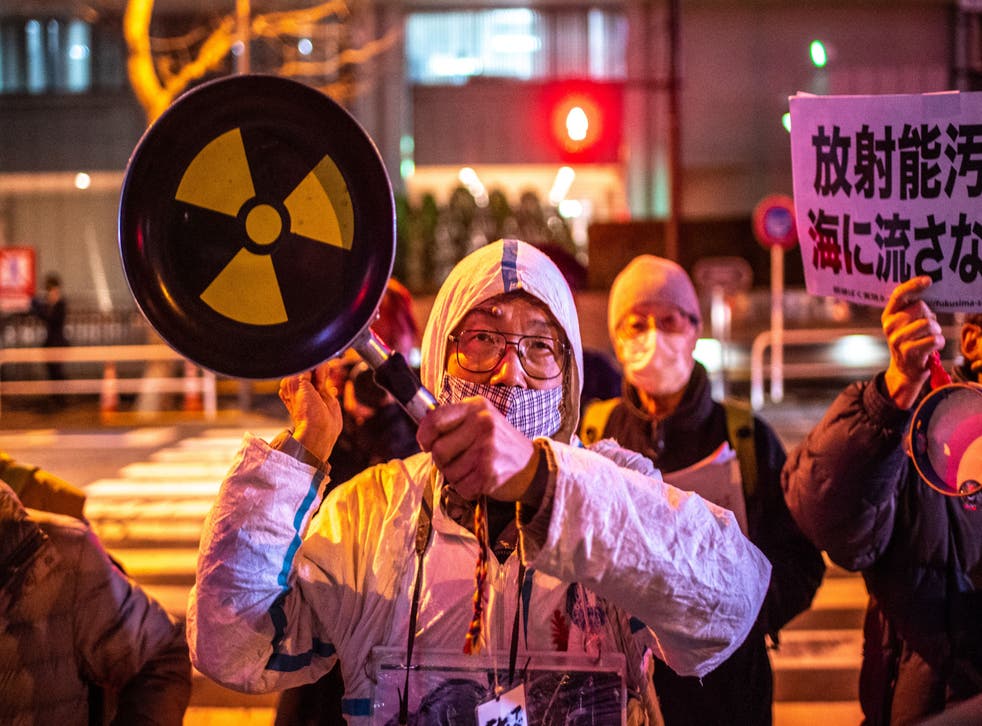This is nothing more than a knee-jerk reaction to an energy shortage European governments should have seen coming
David Callaway
THE INDEPENDENT UK

Even Japan, victim of the Fukushima disaster a decade ago, is restarting some of its plants.
(AFP via Getty Images)
The global scramble for fuel after Russia’s invasion of Ukraine has decidedly ended any debate over whether nuclear energy should be part of the world’s new renewable era.
Governments in Europe, Asia and the US have all recently overridden environmental concerns about radioactive waste and nuclear accidents to recommit to nuclear power plants as a part of any transition away from oil and gas. As the world celebrates Earth Day this weekend, the return of nuclear energy harks back to the 1970s, before the accidents at Three Mile Island and Chernobyl scarred its reputation as a safe and cheap alternative to oil and gas.
But the sudden spurt of nuclear optimism from Washington to London is little more than a political feint. By the time most proposed nuclear projects are paid for and developed, in a decade or more, we will be either well into a new chapter of solar and wind energy dependence or dashed against the globally-warmed rocks of fossil fuel hubris.
Next week, the Biden administration will commit up to $6bn of its infrastructure bill to preserving almost 100 ailing nuclear power plants for future use. Plans to transform closing coal plants – and their workers – into nuclear facilities, are taking shape. Nuclear power currently makes up about 20 per cent of US energy usage, compared to wind (9 per cent) and solar (3 per cent), according to the US Energy Information Administration.
In Europe, harsh condemnation of nuclear power in places such as Germany, the UK and Brussels has given way this spring to the political expediency of siding with countries such as France, which have long supported nuclear power.
Belgium, for example, has changed its mind and recommitted to building new power plants. Poland plans to build new ones. France has doubled down and even the UK’s Boris Johnson has placed new nuclear facilities squarely within his government’s new energy strategy, even at the expense of onshore wind farms. He wants to move Britain’s nuclear mix to 25 per cent by 2030 from 16 per cent.
Even Germany, in the process of closing all its nuclear plants by 2030, is weighing its options now that it faces the potential loss of Russian oil and gas, which make up 40 per cent of its energy usage. China is building several nuclear plants and even Japan, victim of the Fukushima disaster a decade ago, is restarting some of its plants.
Nowhere is the excitement greater than in the US though. While no big new plants are on the horizon, and up to half of the remaining 93 plants are closed or expected to fail from lack of upkeep by 2030, venture capitalists and philanthropists such as Bill Gates are backing smaller, movable mini-reactors.
They argue the new reactors will be safer and be easily transported or exported to places that need them. And if one fails, another one can take over seamlessly, such as jet engines do on planes. One Gates-backed company, TerraPower, is in the forefront of this movement. It says its smaller reactors have safer cooling systems to prevent the type of accidents seen in Fukushima. There are other companies chasing this process as well.
But like all new technologies, these products will take years to develop. And great expense. Restoring existing facilities or building massive new ones will be equally hamstrung by time and expense overrides, with costs running into the tens of billions of dollars for governments cash-strapped by current energy shortages.
In Europe, there is the added danger of placing nuclear facilities too close to NATO’s front line with Russia, underscored by Russia’s dangerous mishandling of Ukraine’s Chernobyl plant when its troops temporarily captured it last month.
The energy crunch caused by Ukraine is an immediate crisis, not one that can be fixed with long-term, expensive solutions. While Europe – and the rest of the world – must think long term to mitigate global heating and stop burning fossil fuels, the decreasing costs of other renewable energies such as wind, solar, and tidal will eventually catch up with expensive alternative plans. Likely faster than we all think, given the reduction in their costs over the past 10 years.
Recommended

Opinion: Climate protests should be disruptive – how else can we get your attention?
By some measures it’s heartening to see the nuclear question answered for now. The EU, for example, will include nuclear in its taxonomy for its renewable transition.
But the sudden sprint toward nuclear power by international governments as a result of the Russian invasion of Ukraine is nothing more than another knee-jerk reaction to an energy shortage they should have seen coming years ago.
By some measures it’s heartening to see the nuclear question answered for now. The EU, for example, will include nuclear in its taxonomy for its renewable transition.
But the sudden sprint toward nuclear power by international governments as a result of the Russian invasion of Ukraine is nothing more than another knee-jerk reaction to an energy shortage they should have seen coming years ago.

No comments:
Post a Comment